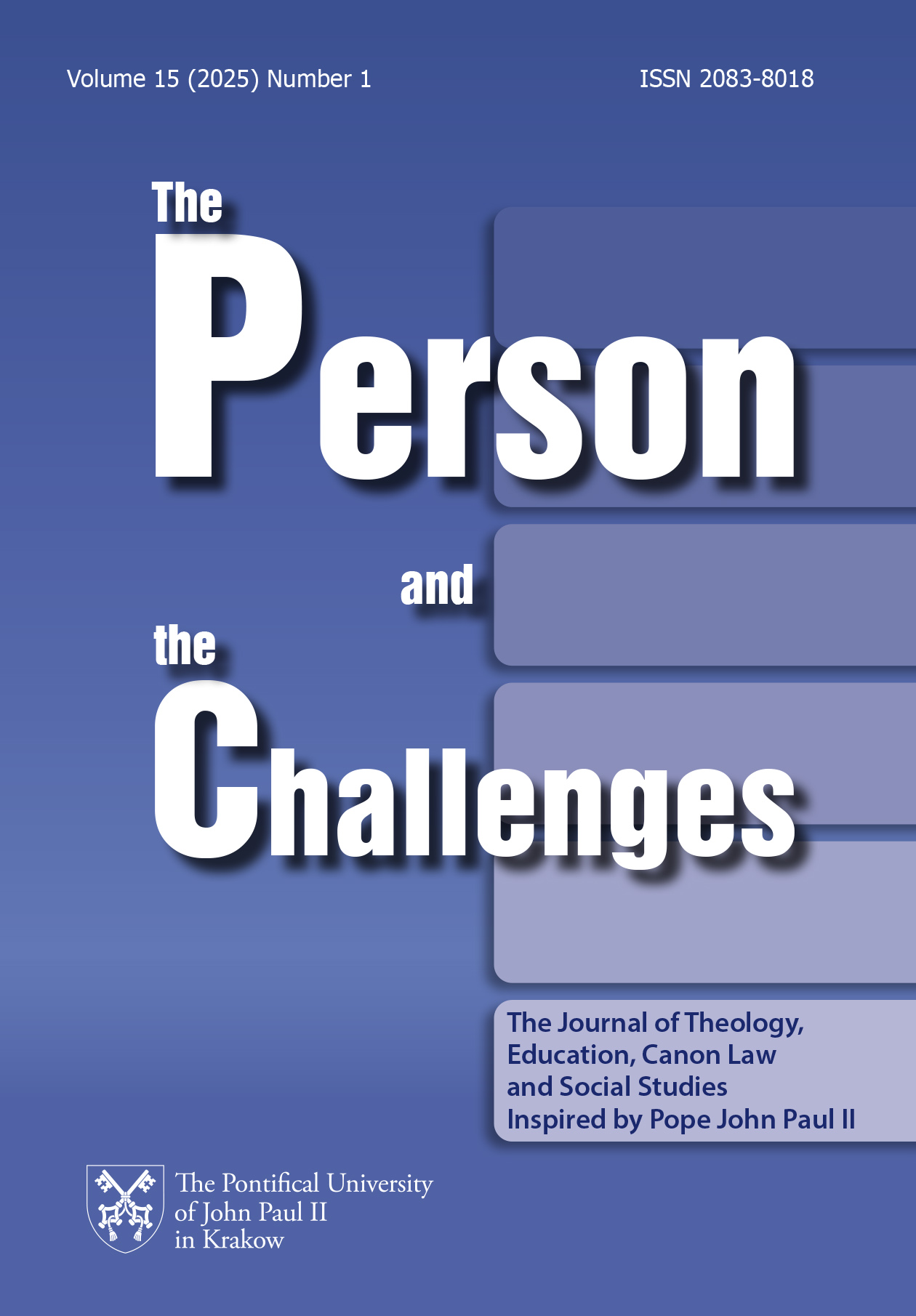Discernment through consecration
DOI:
https://doi.org/10.15633/pch.15106Słowa kluczowe:
Catholic Church, Consecration, Discernment, John Paul II, VocationAbstrakt
The Catholic Church faces a critical shortage of vocations, whereby it lacks available resources to evangelise and welcome others into a vibrant, resource-abundant ecclesial community. Meanwhile, young adults today tend to commit to vocations later, leaving a gap during which they remain uncommitted to a particular vocation, yet skilled, capable, and energetic. The current emphasis on increasing vocations seems to be through social media and advertisements, while Church teachings offer valuable insight into the process by which reflects on their inner life to make decisions. Yet, vocations remain scarce. Here, we propose a path towards authentic discernment based on John Paul II’s 1996 Apostolic Exhortation, Vita Consecrata. We suggest that young adults engage in a daily offering of both interior and exterior acts of love, strengthening their relationship with the Lord, fulfilling the universal vocation to love, and preparing them to hear the Lord’s call.
Bibliografia
Benedict XVI. Deus Caritas Est. Vatican City: Libreria Editrice Vaticana, 2005.
Catechism of the Catholic Church. 2nd ed. Vatican City: Libreria Editrice Vaticana, 1997.
Cherlin A. J. “Demographic Trends in the United States: A Review of Research in the 2000s.” Journal of Marriage and Family 72, no. 3 (2010): 406.
Francis. “Catechesis on Discernment: 2. An Example: Ignatius of Loyola.” September 7, 2022. https://www.vatican.va/content/francesco/en/audiences/2022/documents/20220907-udienza-generale.html.
Francis. “General Audience of 21 December 2022.” Accessed June 12, 2024. https://www.vatican.va/content/francesco/en/audiences/2022/documents/20221221-udienza-generale.html.
Futrell J. C. Studies in the Spirituality of Jesuits. St. Louis: The Institute of Jesuit Sources, 1970.
Hodge B. “Is There a Global Vocations Crisis? A Look at the Numbers.” The Pillar, March 22, 2022. https://www.pillarcatholic.com/p/is-there-a-global-vocations-crisis.
Ignatius of Loyola. The Spiritual Exercises of St. Ignatius of Loyola. Translated by Elder Mullan. New York: P.J. Kenedy & Sons, 1914.
John Paul II. “Apostolic Journey to the Philippines: Prayer Vigil on the Occasion of the 10th World Youth Day in Manila.” Speech, Rizal Park, Manila, January 14, 1995. Accessed August 8, 2024. https://www.vatican.va/content/john-paul-ii/en/speeches/1995/january/documents/hf_jp-ii_spe_19950114_vigilia-manila-gmg.html.
John Paul II. Go in Peace: A Gift of Enduring Love. Edited by Joseph Durepos. Chicago: Loyola Press, 2003.
John Paul II. Vita Consecrata. Vatican City: Libreria Editrice Vaticana, 1996.
Lipka M. “Millennials Increasingly Are Driving Growth of ‘Nones’.” Pew Research Center, May 12, 2016. https://www.pewresearch.org/fact-tank/2016/05/12/millennials-increasingly-are-driving-growth-of-nones/.
Pew Research Center. “America’s Changing Religious Landscape.” May 12, 2015. https://www.pewforum.org/2015/05/12/americas-changing-religious-landscape/.
Wuthnow R. After the Baby Boomers: How Twenty- and Thirty-Somethings Are Shaping the Future of American Religion. Princeton, NJ: Princeton University Press, 2007.
Pobrania
Opublikowane
Numer
Dział
Licencja
Prawa autorskie (c) 2025 Samantha R. Mattheiss, Joseph R. Laracy

Utwór dostępny jest na licencji Creative Commons Uznanie autorstwa 4.0 Międzynarodowe.
Autorzy publikujący w czasopiśmie udzielają jego wydawcy zgody o następującej treści:
- Autor zachowuje autorskie prawa majątkowe do utworu, a jednocześnie udziela wydawcy czasopisma zgody na jego pierwszą publikację w wersji drukowanej i wersji online na licencji Creative Commons Uznanie autorstwa 4.0 Międzynarodowe oraz zgody na wykonywanie opracowań, w tym przekładów.
- Autor ma możliwość udzielania zgody niewyłącznej na opublikowanie utworu w wersji, która ukazała się w czasopiśmie (np. zamieszczenia go w repozytorium instytucjonalnym lub opublikowania w książce), wraz z informacją o jego pierwszej publikacji w czasopiśmie.
- Autor może umieścić swój utwór online (np. w repozytorium instytucjonalnym lub na swojej stronie internetowej) jeszcze przed zgłoszeniem utworu do czasopisma.

